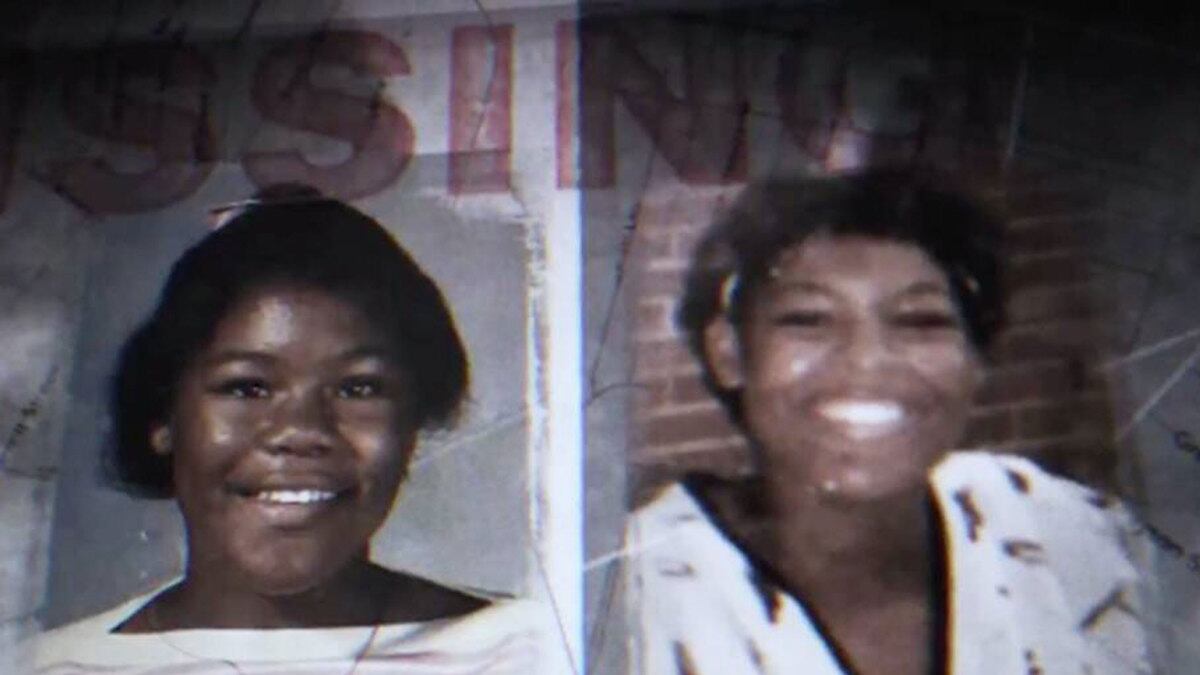The latest Oxygen true crime documentary, The Disappearance of the Millbrook Twins, is nothing short of infuriating. Premiering on Nov. 23, the two-hour special delves into the unsolved disappearance of 15-year-old twins Dannette and Jeannette Millbrook in 1990. In the almost 30 years since the teens inexplicably vanished from the parking lot of a local gas station in Augusta, Georgia, their case has gone virtually uninvestigated, robbing their family of closure. It is a vexing and heart-wrenching example of how the institutions meant to protect people, particularly law enforcement and the news media, often fail black children.
The Disappearance of the Millbrook Twins follows former federal prosecutor Laura Coates and former homicide detective Page Reynolds as they try to finally get to the bottom of the mystery. The duo interviews various experts, the girls’ relatives, and even a potential eyewitness to the disappearance in pursuit of the truth. In doing so, they also expose the severe injustice of the way Dannette and Jeanette’s case was mishandled all those years ago.
When the girls’ mother, Mary “Miss Louise” Sturgis, called the sheriff on March 18, 1990, to report her daughters missing after they failed to come home from the neighborhood Pump ‘N’ Shop, she was dismissively told by Detective Jim Schipp that they probably just ran away. After that, there was basically no investigation. Miss Louise says that Schipp and the sheriff’s office had made up their minds that the teens were runaways, and they simply didn’t care enough to investigate other possibilities. Their younger sister, Shanta Sturgis, refuses to accept this explanation. “I used to sleep in the bed with these girls, sleep in the same room with these girls, we used to take baths together, we used to go places together,” she explains. “Nobody’s gonna make me believe that they ran away from home.”
The facts of the case and the police’s neglect are contextualized with the vast demographic disparity of Augusta—the wealthy part of town where the annual Masters Golf Tournament takes place on one side of Broad Street, and the lower-income neighborhoods on the other. “The police department at the time, they didn’t help because of where we lived,” Sturgis speculates succinctly. The story also received very little coverage in the mainstream media, in spite of the rarity of a missing persons case involving twins.
Still, the extent of the apathy is often shocking. While Schipp declined to be filmed, he agreed to speak to Coates off-camera and told her he spoke to Miss Louise every week or two following Dannette and Jeanette’s disappearance. When asked why Miss Louise only remembers speaking to him twice, he allegedly replied, “Well, I don’t know how to explain that other than maybe her IQ.” Coates also claims he admitted to calling the National Center for Missing and Exploited Children to falsely report that the girls had been found because he was sure they were runaways.
It is essential to go into The Disappearance of the Millbrook Twins without the expectation of new, concrete answers (even when the production really, really wants you to think Coates and Reynolds have cracked the case). It should go without saying that the chances of solving a three decade-old case with no leads or evidence are very slim, but for a fleeting moment, the doc really makes it seem possible. Then, the producers dismantle all of the progress they promised throughout the preceding hour and a half with a single title card revealing that the sheriff’s office determined Coates and Reynold’s primary lead to be a dead end and halted the investigation.
At first, I was frustrated at what felt like a waste of two hours. The content of the documentary is incredibly upsetting, but the film itself is not particularly engaging, with overdramatized scenes of exposition featuring Coates and Reynolds frequently distracting from the emotional narrative. That there is no payoff for the twins’ family or for the viewers at home, even when payoff seems inevitable, makes the whole production feel more like a money-grabbing effort from Oxygen than a sincere attempt to help. It even seems exploitative at times, requiring Miss Louise and Shanta to retread their trauma, on camera no less, only to be disappointed once again.
Upon further reflection, though, perhaps the acute frustration I felt from not getting closure simply as a third-party viewer sheds light on the torment that Miss Louise and her children have endured all of these years that their questions have gone unanswered. The disappointing end to this telling of Dannette and Jeanette’s story is an effective testament to the real-life, irreversible damage of institutional racism. And at the very least, there is the hope that The Disappearance of the Millbrook Twins will finally bring national attention to a case that desperately needs it.






